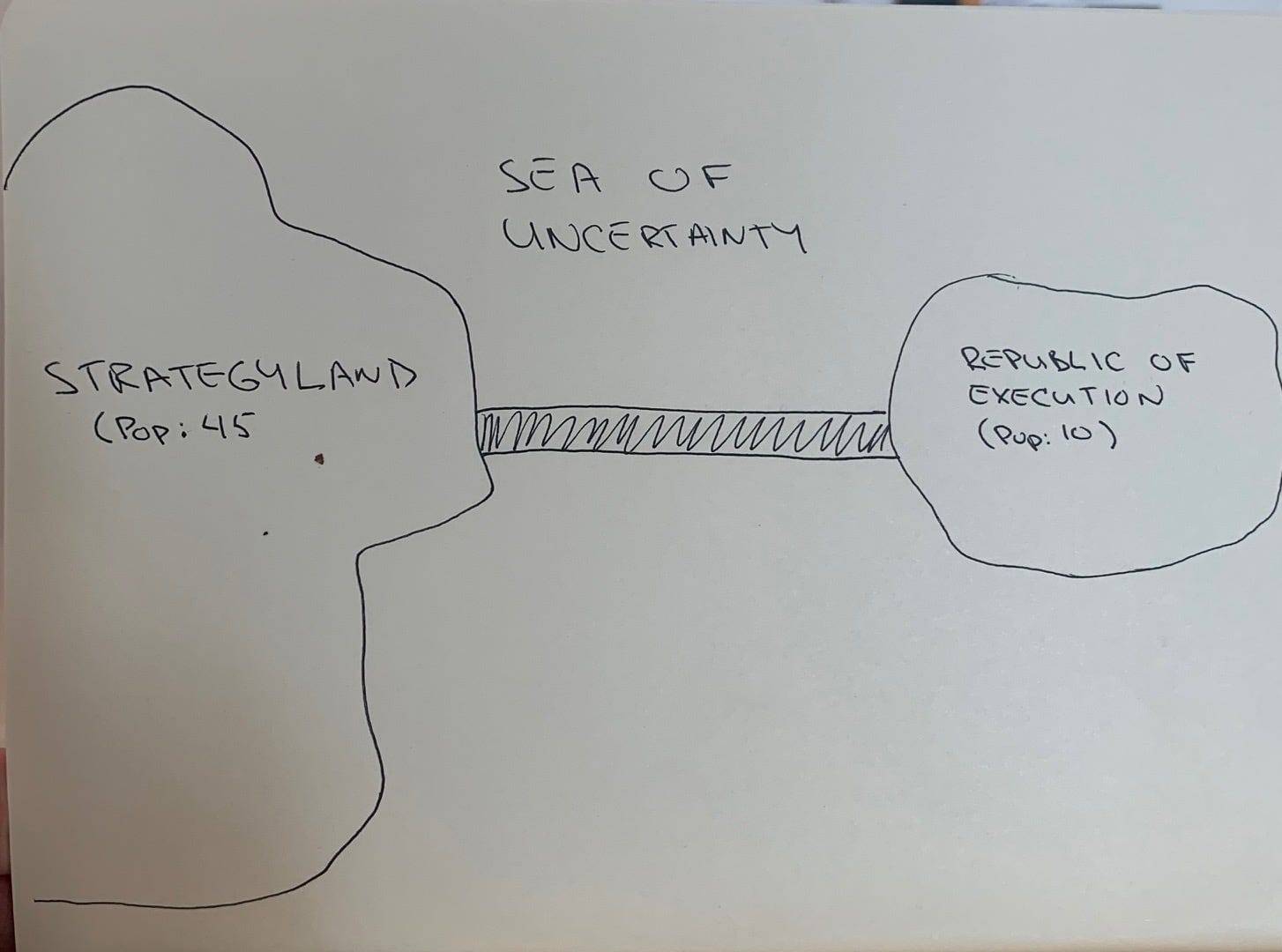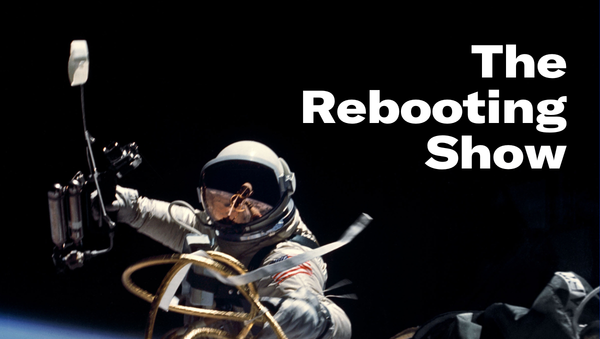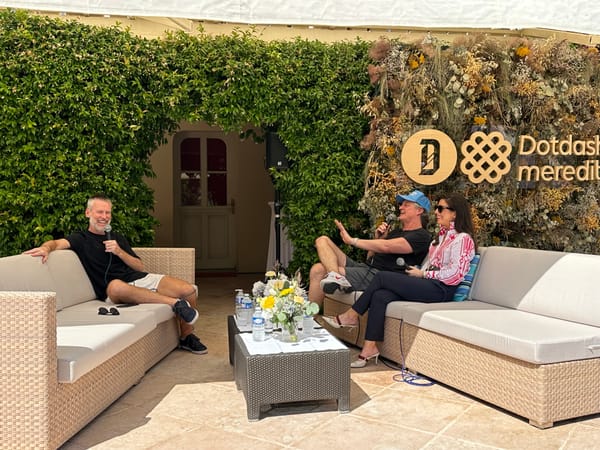Why Axios worked
"There's hope in media."

Welcome to the second edition of The Rebooting. This week, I’m going to look into the rearview mirror a bit more to examine some things I learned at Digiday, loosely modeled on Stefan Sagmeister’s “Things I Learned in My Life So Far.” Also: why I think Axios has worked and events are in store for a short-term comeback.
Things I learned at Digiday

Last week, I went over the original plan for Digiday, and how we did against it. That was focused mostly on the editorial. I want to expand that a bit to focus on lessons from the execution. Too much is made of “vision” and supposedly unique models. Nearly all of modern media -- and probably business and life in general, really -- is simply executing better and more consistently. Here are my top 10 takeaways:
Choose quality over quantity. This would seem obvious, and yet it often is not. In the media business, there is always a tendency to do more. More stories, more ads, more events, more awards, more videos, more podcasts. The reason is simple: Commoditization. The pressures on the media business lead everyone down the primrose path of more, almost always at the expense of quality.
The surface of the water is crowded, but down below is far more interesting. The media business is over-covered relative to its size. The reason is simple: Journalists find themselves and their field fascinating. That left us with a dilemma at Digiday, going up against entrenched competitors and far bigger outlets. How would we differentiate? Our approach was narrow and deep. Understanding the mechanics of media -- how the business truly works -- would enable differentiation, even if that meant putting on wading boots and a hazmat suit to get deep into ad tech. (Apologies to all the Digiday reporters I sent into the bog.)
For every new initiative, ask: What job does this do? There’s a fetishization of ideas at all companies. But without execution, they’re worthless. The key test we used was what job would it do. Sometimes a new product does a straightforward job of generating revenue. Think of an awards program. But other times, initiatives can burnish the brand, engender loyalty or provide useful audience data. The key is there needs to be a job.
If you’re confused about a product internally, imagine how the audience feels. If the “what job does this do” criteria fails, use the confusion test. There is a tendency in life to overcomplicate things. Take subscriptions. Too many publishers offer too many options. This is 101 stuff: good, better, best. Then use the time to make great content people will pay for vs trying to whiteboard your way to success.
There is no difference between editorial and “the business side” The pivot to paid clarifies matters in a media business. The editorial is the business. This sounds obvious, but too often the old notion of “church and state” is used in a reverse way, in order to treat editorial as a service provider. The value of a media business lies in the unique content it creates and the loyalty it engenders with an audience.
Focus on being an indispensable daily habit people need to do their jobs. Habit is everything. For whatever reason, many publishers in the scale era forgot the key litmus test of their brands: Will people miss you if you went away? For the many publishers whose cause of death was ascribed to Facebook, few were truly missed. The way you get out of the commodity trap is be an indispensable habit. That is why email is so critical.
You can’t growth hack your way to a sustainable brand. I wrote last week that we took an approach to be “strategically under-optimized.” I took a dim view of the growth hacks and marginal gains they promised. Optimization has a place, but it is an incremental add-on to a strong brand built by showing up every day and providing value to your audience. Simple but hard.
Successful kitchens need recipes to ensure consistent quality. I once went on a kitchen tour of a Michelin star restaurant. I asked the chef how he makes sure they’re still putting out great food while he was talking to us. Simple: recipes. The truth is you need recipes a lot of people can execute on in order to have a differentiated brand. We did that by codifying formats like The Confessions and WTF explainers.
Some data is better than no data, but you’ll never have enough data so make a decision rather than put it off. I love data. It helps immensely make the right decision, or at least make the wrong decision for the right reasons. But data can’t paralyze decisionmaking. Too often, the absence of data is used as an excuse for inaction.
Say no to 99% of “partnerships.” The best partnerships are when someone pays money in return for a service. Otherwise, these partnerships come down to someone wanting something for free. Having a standing policy of saying no thanks saves a lot of time and fruitless calls.
Why Axios worked
Axios is one of my favorite relatively young media businesses. It launched with plenty of skeptics who thought Jim VandeHei and team would simply run the Politico playbook (yes, I know). In fact, Axios updated that playbook and made several right calls as it now stands to be a profitable $58 million business, with a clear pathway to $100 million, according to VandeHei in a conversation with Peter Kafka. “There’s hope in media,” he rightly noted. Here’s my view of what Axios got right:
- It struck the balance between cultivating stars under a single brand. I’ll dig into the shift in power to creators in a future newsletter, but Axios has proven it can cultivate and keep stars like Jonathan Swan and Sara Fischer. (Giving all employees equity helps.) News publishers are going to need to find creative ways to keep top talent.
- It found a lucrative ad segment. I would always tell our reporters that there is no “publishing market” since there are so many publishing models. Same goes for advertising. Axios is nearly entirely ad dependent, but most of its ad dollars come from corporate social responsibility budgets that have grown. The ad market is deep and varied; not all ad models are bad, not by a long shot.
- It pivoted to email before it was cool. The Axios “smart brevity” format can get repetitive, but it has allowed the company to build habit with its audience in various verticals. The success of email publishers like The Morning Brew is no accident. There is a reason Business Insider would pay $50 million the business.
Quick thought: Events will have a dead-cat bounce
There are signs of optimism for the pandemic’s end being in sight, but a broadly deployed vaccine will not happen for another six months. That’s bad news for events. But I do believe we’ll see a rebalancing of risk in the months ahead on many levels as societies adjust to the reality of living with the virus in a responsible way. I think next spring we’ll see a surge in demand for in-person events. Zoom is fine, but multiple executives have told me in recent weeks that they surprisingly miss business travel. For all the whining about Cannes and CES, business travel was a way to break up the daily monotony. I think there will be a window for events requiring travel, but it will quickly normalize to a broader, long overdue shakeout of an overcrowded events sector. On Wall Street, they call a temporary recovery in a bear market a dead-cat bounce. Expect one in events.
Coming soon: The Rebooting Podcast
I got a nice number of notes from Digiday Podcast listeners that they’d miss my interviews there. I plan on restarting a podcast soon. Right now, I think it will focus on media business success stories. Over the past couple weeks, I’ve spoken to many who are building sustainable models in a diverse array of areas. I’d like The Rebooting Podcast to highlight these businesses. Send me a note with your thoughts -- and any leads for a podcast producer.
Coming up next week: The coming rise of micro media. Email me your thoughts and follow me on Twitter @bmorrissey.




